Our first visit to Alice Springs and why wouldn't I entitle this chapter of our journey by that name? Surely there isn't anyone who didn't enjoy the movie with Byron Brown and most have read Nevile Shute's novel. Well that is of our era! On our first tourist day in 'The Alice' we visited the National Transport Hall of Fame and I think they must have had every publication of the novel on display there. We have ended up spending 8 nights in 'Alice' due to the repairing of our fridge. A number of our friends suggested some tourist attractions that we could see or do. All happy memories of their time visiting the major town in the 'Red Centre of Australia'. In 2014 Alice Springs has a population of 28,000.We had absolutely freezing mornings, like 2 degrees, and that was far too cold for me to get up to go for a hot air balloon ride as Val suggested. Peter wasn't keen, so I would have had to go on my own and it was much nicer snuggled up in bed, with the airconditioner on!Ronda said 'Bo Jangles' was somewhere not to be missed, but when I googled it, I found it was going to close its doors in December 2013 if no one had purchased the business.
Sure enough, it was all closed up and still has a 'For Sale' sign on it! It appears to have been an eccentric type Saloon Bar. Not sure if it was that when Ronda and Robert visited 'The Alice'.Delma suggested the Todd Mall markets on Sunday mornings. We did go, but they are only on every fortnight, so it was the Sunday before we got to 'The Alice' and of course won't be on again, until we have left! There were two aboriginal women with a few of their paintings laid out on the pavement and I was tempted to buy one of them, but then went cold on the idea! I did purchase a $2 print of water cascading off Uluru from one of the retail outlets. Not as good as being there to photograph the real thing though, Donelle! I am envious of you being there to capture your photo. I also purchased a supper cloth, designed by an aboriginal woman from the Tanami Desert. The story behind her aboriginal design was included. Delma also suggested we do the 'Emu Run' tour to the West MacDonnell Ranges. Well we did our own 'Emu Run', but we did see the companies little bus at the Ormiston Gorge.
It was great that our friends shared their tourist experiences for us to consider.National Road Transport Hall of Fame: We spent a couple of hours looking at trucks on Tuesday 24th. I enjoy the 'feely bits' and I did find some 'feely bits' amongst all those trucks! Reading the stories attached to the inductees to the Hall of Fame was something that really interested me. During the two hours of 'trucks, trucks and more trucks' I did put some bits together. Of course I was looking for anyone or thing from WA! It would have been great if there was a database that you could search for all W.A. acquisitions. Maybe with more volunteer involvement, that will happen. But I did find a few West Aussies that have been inducted into the Hall of Fame. I'm sure there were lots more than I actually found. We found Hector Sands. We actually met and befriended his son at Port Augusta. Peter and his wife Lyn were also on their way to Tamworth. We ate our dinner one night with them in the camp kitchen at Broken Hill caravan park and it was surprising, just how often we ran into them at the Country Music Festival.
Hector Sands was inducted into the National Transport Hall of Fame in 2009. He was born in Echuca in 1913 and purchased his first truck in 1930 and contracted to the Victorian Road Board. After crossing the Nullarbor by train to W.A. on a holiday he saw an opportunity for the transport of livestock by road in the State. In 1948 he headed west, with his newly purchased single axle, double decker strap trailer, to tow behind his Ford Prime mover. Once in W.A. it was 6 weeks before Hec finally got a load, transporting sheep to the Midland Sale Yards for Elders. This started his transport career in W.A. In 1954 Hec saw the opportunity to cart packaged milk into the wheatbelt area of W.A. He purchased a Comet 90 with an insulated box and used wet wheat bags and block ice to keep it cold. In the late 50's Hec signed his first cartage contract with 'Masters Dairy' and purchased a Leyland 110 with a Lister powered refrigeration unit. Hec never looked back and expanded the business and his fleet to include carting newspapers, mail and small parcels.
In 1979 ill health forced Hec into retirement and his three sons took over and expanded in refrigerated transport.Then there was Lew Couper from Trayning. He knew at a young age that he wanted to be a truckie! Lew grew up on the family farm near Trayning and he was never far from trucks. They were an integral part of his life. When drought swept through the district in 1969, it resulted in massive stock movements. There was a shortage of livestock transporters and Lew saw an opportunity and began his life-long work in the transport industry. Lew was amazed to find that the industry was heavily regulated. In 1985 in sheer frustration with what was happening in his industry, he joined the local 'Livestock Transporters Association' in order to have his say. Lew gave it his all and a year later was elected to serve as President, a position he held for 5 years. During this time he was instrumental in effecting a great deal of positive change for the road transport industry on both local and national levels.
One of Lew's trucks is in the 'National Road Transport Hall of Fame'. The prize exhibits at the 'National Road Transport Museum' are the first purpose built road-trains to come to Australia and this is the story:
The Rotinoff Viscount is said to have been without doubt one of the most unique trucks in the world. Two arrived in Central Australia from Britain (designed by a Russian Engineer George Rotinoff) in 1957. They were hailed as a new era in cattle transportation. It was at a time when the big American marques were taking Australia by storm. The two British trucks were undisputedly 'Kings of the Road in the Territory". The Vestey family owned extensive cattle properties throughout the Top End of Australia and needed heavy trucks to get their cattle to the abattoirs. They were having to walk them, prior to purchasing these trucks. The family refused to look at American trucks and commissioned Rotinoff to purpose build two road trains. The trucks were nick-named Jackie and Julie and were powered by a 250bhp six cylinder Rolls Royce diesel engine. They were the only two of this model ever built.
Then there was the Kenworth Dealer Museum to check out. More trucks and these were BIG ones! Guys love Kenies don't they? My favourite was the little pink one with the cement mixer on the back! We also found the bust of Tom Kruse out in 'Smithies Kitchen' area. Tom was the 'feely story' I liked at the 'National Motor Museum' in Birdwood in S.A. Ted Egan unveiled this bust of Tom. Of course Tom Kruse was one of the first 'truckies' to be inducted into the 'National Road Transport Hall of Fame'. 'Smithies Kitchen' is an area that has been created to have a feed and a beer together and it is where the Committee hold social gatherings.
National Women's Hall of Fame: This is also in Alice Springs and we visited this on Wednesday morning. The 'feely stories' here were those associated with Molly Clark, the founder of the 'National Women's Hall of Fame'. I also enjoyed the stories a former Matron of the Women's Prison has put together. One could say how are these two related? The 'Old Alice Springs Goal' which was operated from this site from 1938 until 1996, is now home for the 'National Women's Hall of Fame'. The old goal buildings were to be demolished and the grounds developed for a housing development. Once again public outcry reversed the decision and the Heritage listed complex has been refurbished and reopened as the 'National Women's Hall of Fame'. The Committee were successful with their application to have the use of the buildings. The NWHF displays have been set up in the building that was the goal kitchen. The 'Women's Cells' now contain positive stories of the activities and education of the women prisoners. These have been provided by the former Matron of the prison, who is currently on the Board of the NWHF. Great that they are able to get such stories recorded before it is too late! It was really encouraging to read of the initiatives she was able to introduce over time. I really loved the 'Signature Quilt Project' which was entitled 'A Patchwork of Empowerment'. It is made of 343 calico patches, all signed by women who were first in their field. I found Kay Goldsworthy's signature, Shane Gould's and Susan Gordon. Susan was the first aboriginal person to head a government department in WA. Kay was one of eight women to be ordained as Australia's first women deacons in 1986. She was one of ten women to be ordained as Australia's first female Anglican priests in Perth in 1992. What they didn't have recorded was that she became a Bishop of the Anglican Diocese of Perth in April 2008. CWA were very fortunate to have Bishop Kay conduct a Church Service in St George's Cathedral in September of that year. It was the 'Blessing Service' held prior to the commencment of the 14th South Pacific Area Conference of ACWW that was held in Perth. I have a photo that was taken with Kay, the World President of ACWW, the South Pacific Area President and myself.
Alice Springs Telegraph Station: This we visited on Thursday 26th. The area is set against the magnificent MacDonnell Ranges and is a poplular place for a walk or picnic. The 'Alice Springs Telegraph Station' is the best preserved of the 12 stations along the overland Telegraph Line. The history displayed at the Station, makes it a very worthwhile place to visit when in 'The Alice'. It was telgraph week and there was an elderly gentleman in the Post Office at the Station, sending through telegrams to Adelaide. While we were there he communicated to Adelaide by morse code, telling Adelaide he had a couple from Yuna with him in 'Alice'. The person in Adelaide said "It sounded like Yuna might be a bit of a dry place"! Peter had a bit of fun with them with a comment or two! There was lots of interesting history to absorb at the Telegraph Station. If it wasn't already the case, we started to get a real feeling for the exploration of John McDouall Stuart. Stuart led exploration parties up through the centre of Australia and one really marvels at the courage and determination of these men and all they achieved, in such dry and torrid conditions. The 'top dog' at the Telegraph Station though, was Sir Charles Todd. He was the man resposible for one of the greatest civil engineering feats in the service of Australia, when he and his teams completed the north/south Overland Telegraph Line and linked the nation to the world. The telegraph line extended from Darwin to Port Augusta, a distance of 2,900 kms. The final link was joined on 22nd August 1872. The Governor of New South Wales remarked "That the earth had been girdled by a magic chain and mail which had taken 120 days to arrive, could now arrive within 48 hours".
In 1858 the South Australian Governor, Sir Richard MacDonnell proposed landing the cable on Australia's north coast and building an overland telegraph line to Adelaide.CharlesTodd was Superintendent of Telegraphs in South Australia at that time. Initially he was unenthusiastic about MacDonnell's plan. He doubted that an overland telegraph line could be built across the unexplored centre of the continent. Events in the following years changed his opinion. Stuart successfully crossed the continent in 1862 and provided a path for the line to Adelaide. Undersea cable became much more expensive and the South Australian Government succeeded in establishing a settlement at Port Darwin on the north coast in 1869. This would provide a landing place for the overseas cable and a base for constructing the line south. Todd then enthusiastically supported the MacDonnell plan. However the South Australian Government faced fierce opposition from Queensland who wanted a line built across northern Australia, to link with their exisiting telegraph network. The South Australians prevailed and on 29th April 1870, they offered to pay the full cost of building the line and to complete it by 1st January 1872. Todd was to achieve this massive engineering task and gain international prestige for the colony and himself. Todd was a man of exceptional drive and an amazing optimist. The dealine imposed by the 'British Australian Telegraph Company', allowed only 18 months to construct the OT line. Only after planning had begun in earnest did Todd come to terms with the task. It is written "And then, perhaps, for the first time, I fully realised the vastness of the undertaking I had pledged myself to carry out".The 'Telegraph Station' in Alice Springs was the first white settlement in Central Australia. From a lonely outpost, the telegraph station grew into a small village. It was home to many telegraphists, their families, linesmen and other workers. The telgraph station closed on 26th January 1932 and the staff moved to a new post office in the neigbouring township of Stuart. The following year Stuart was renamed 'Alice Springs'. In actual fact 'Alice Springs' was the name originally given to a water hole at the Telegraph Station The supposed spring, which they later found only to be a waterhole, was named after Charles Todd's wife Alice. It was also interesting to see it recorded in a couple of places that Charles Todd's wife never did visit the town that bore her name!The historical precinct was a Telegraph Station form 1872 - 1932. Known as 'The Bungalow' it was a children's home from 1932 - 1942 and then a reserve for the local aboriginal population after the war. In 1963 the telegraph station was declared an historical reserve and the buildings have been restored to the appearance of 1895 - 1905.
The Ghan Museum: This we did on Sunday. We didn't realise that it had taken so many years to get the railway line from Alice Springs to Darwin. It was not until February 2004 that the standard gauge line was extended right through to Darwin. By 1929 there was a railway line linking Alice Springs to Adelaide. The Afghan Cameleers forged their place in Central Australian history, driving their camel trains 600 kms across desert to deliver essential provisions from the railhead at Oodnadatta, to Alice Springs. Their contribution to the opening up and accessibility of the great mass of inland Australia was enormous and vital. Highlights in the Museum include locomotive NSU58, one of the first diesels to take over from the steam trains. After our visit to the Ghan Museum we went back through 'The Gap' for a drive around the Casino area and the golf club. As we drove alongside the railway line, with the dry river bed of the Todd River on the other side of the highway, I couldn't believe our luck! And I had the camera! We were right alongside 'The Ghan' leaving for Adelaide, after the 4 hour stay in Alice. There are two trains up to Darwin and two trains back, each week. The work of John Flynn in 'The Alice': One of the first photographs I took in Alice Springs was in Todd Mall. We had gone into the CBD area to do a bit of grocery shopping and as we walked down 'Todd Mall' we came across historic 'Adelaide House' and the sign out the front saying it was the 'First Hospital in Central Australia'. I took a photo with my phone and I also took one of the Uniting Church alongside. Later in our touring of Alice Springs, we took photos of John Flynn's historic grave on the outskirts of town. That first snap of 'Adelaide House' was the start of much learning on the history of Reverend John Flynn, Uniting Church Australia, Inland Mission Australia and the Royal Flying Doctor Service. John Flynn was responsible for bringing medical and christian services to the outback. In 1912 John Flynn was sent by the Church to investigate the needs of people living in the Northern Territory. Travelling vast distances, he found a complete lack of services that city people took for granted. Communication was slow and difficult. Illness and injury often proved fatal. Flynn's report challenged the Church to improve so much for outback people. The 'Australian Inland Mission' (AIM) was established, with John Flynn as its first superintendent. With tremendous energy and enthusiasm Flynn set about implementing his dream of a 'mantle of safety' that would bring medical, social and religious services to isolated outback communities.I have taken the following from the internet;
Reverend John Flynn established the Australian Inland Mission in 1912 with the first of his nursing hospitals built in Oodnadatta. In 1913 he visited the telegraph station in Alice Springs and the adjacent township of Stuart and proposed that an outback bush hospital should be
built there. It would be 13 years before this became a reality. The new hostel was named 'Adelaide House' because of the fund raising efforts of a group of young people in Adelaide.
For 13 years between its opening and 1939, it was the only hospital in the whole of central Australia. When the new Alice Springs Hospital was opened in 1939, 'Adelaide House' continued part of its former role by providing hostel facilities for bush mothers and their children and as an after-care hostel for recuperating patients. It became a museum in 1980.
The 'Alice Springs Inland Mission Hostel' was the third in the Territory. Maranboy had been opened in 1917, and Victoria River Downs in 1923, but both had been largely financed by the
government. Alice Springs was largely built with private fund raising. That's my attempt on the history of Alice Springs. Taken from what I have photographed from display boards and a little help from the internet. Another assignment completed! It has taken me a while to complete this blog because I did want to record in some way, all the history we had read during our stay in 'A Town Like Alice'. In a sense the fridge did us a favour. The stay we had planned for Alice Springs would not have been long enough to see everything and take in the history of the town. Given that we would also want to spend a day exploring the ranges. Learning a little of this early history, has prepared us for the rest of the journey north on the Stuart Highway. The long distances between settlements in Central Australia and the harshness of the country, really makes one appreciate the work of those early explorers. 'A Town Like Alice' has many memories for us.
The Rotinoff Viscount is said to have been without doubt one of the most unique trucks in the world. Two arrived in Central Australia from Britain (designed by a Russian Engineer George Rotinoff) in 1957. They were hailed as a new era in cattle transportation. It was at a time when the big American marques were taking Australia by storm. The two British trucks were undisputedly 'Kings of the Road in the Territory". The Vestey family owned extensive cattle properties throughout the Top End of Australia and needed heavy trucks to get their cattle to the abattoirs. They were having to walk them, prior to purchasing these trucks. The family refused to look at American trucks and commissioned Rotinoff to purpose build two road trains. The trucks were nick-named Jackie and Julie and were powered by a 250bhp six cylinder Rolls Royce diesel engine. They were the only two of this model ever built.
Then there was the Kenworth Dealer Museum to check out. More trucks and these were BIG ones! Guys love Kenies don't they? My favourite was the little pink one with the cement mixer on the back! We also found the bust of Tom Kruse out in 'Smithies Kitchen' area. Tom was the 'feely story' I liked at the 'National Motor Museum' in Birdwood in S.A. Ted Egan unveiled this bust of Tom. Of course Tom Kruse was one of the first 'truckies' to be inducted into the 'National Road Transport Hall of Fame'. 'Smithies Kitchen' is an area that has been created to have a feed and a beer together and it is where the Committee hold social gatherings.
National Women's Hall of Fame: This is also in Alice Springs and we visited this on Wednesday morning. The 'feely stories' here were those associated with Molly Clark, the founder of the 'National Women's Hall of Fame'. I also enjoyed the stories a former Matron of the Women's Prison has put together. One could say how are these two related? The 'Old Alice Springs Goal' which was operated from this site from 1938 until 1996, is now home for the 'National Women's Hall of Fame'. The old goal buildings were to be demolished and the grounds developed for a housing development. Once again public outcry reversed the decision and the Heritage listed complex has been refurbished and reopened as the 'National Women's Hall of Fame'. The Committee were successful with their application to have the use of the buildings. The NWHF displays have been set up in the building that was the goal kitchen. The 'Women's Cells' now contain positive stories of the activities and education of the women prisoners. These have been provided by the former Matron of the prison, who is currently on the Board of the NWHF. Great that they are able to get such stories recorded before it is too late! It was really encouraging to read of the initiatives she was able to introduce over time. I really loved the 'Signature Quilt Project' which was entitled 'A Patchwork of Empowerment'. It is made of 343 calico patches, all signed by women who were first in their field. I found Kay Goldsworthy's signature, Shane Gould's and Susan Gordon. Susan was the first aboriginal person to head a government department in WA. Kay was one of eight women to be ordained as Australia's first women deacons in 1986. She was one of ten women to be ordained as Australia's first female Anglican priests in Perth in 1992. What they didn't have recorded was that she became a Bishop of the Anglican Diocese of Perth in April 2008. CWA were very fortunate to have Bishop Kay conduct a Church Service in St George's Cathedral in September of that year. It was the 'Blessing Service' held prior to the commencment of the 14th South Pacific Area Conference of ACWW that was held in Perth. I have a photo that was taken with Kay, the World President of ACWW, the South Pacific Area President and myself.
Alice Springs Telegraph Station: This we visited on Thursday 26th. The area is set against the magnificent MacDonnell Ranges and is a poplular place for a walk or picnic. The 'Alice Springs Telegraph Station' is the best preserved of the 12 stations along the overland Telegraph Line. The history displayed at the Station, makes it a very worthwhile place to visit when in 'The Alice'. It was telgraph week and there was an elderly gentleman in the Post Office at the Station, sending through telegrams to Adelaide. While we were there he communicated to Adelaide by morse code, telling Adelaide he had a couple from Yuna with him in 'Alice'. The person in Adelaide said "It sounded like Yuna might be a bit of a dry place"! Peter had a bit of fun with them with a comment or two! There was lots of interesting history to absorb at the Telegraph Station. If it wasn't already the case, we started to get a real feeling for the exploration of John McDouall Stuart. Stuart led exploration parties up through the centre of Australia and one really marvels at the courage and determination of these men and all they achieved, in such dry and torrid conditions. The 'top dog' at the Telegraph Station though, was Sir Charles Todd. He was the man resposible for one of the greatest civil engineering feats in the service of Australia, when he and his teams completed the north/south Overland Telegraph Line and linked the nation to the world. The telegraph line extended from Darwin to Port Augusta, a distance of 2,900 kms. The final link was joined on 22nd August 1872. The Governor of New South Wales remarked "That the earth had been girdled by a magic chain and mail which had taken 120 days to arrive, could now arrive within 48 hours".
In 1858 the South Australian Governor, Sir Richard MacDonnell proposed landing the cable on Australia's north coast and building an overland telegraph line to Adelaide.CharlesTodd was Superintendent of Telegraphs in South Australia at that time. Initially he was unenthusiastic about MacDonnell's plan. He doubted that an overland telegraph line could be built across the unexplored centre of the continent. Events in the following years changed his opinion. Stuart successfully crossed the continent in 1862 and provided a path for the line to Adelaide. Undersea cable became much more expensive and the South Australian Government succeeded in establishing a settlement at Port Darwin on the north coast in 1869. This would provide a landing place for the overseas cable and a base for constructing the line south. Todd then enthusiastically supported the MacDonnell plan. However the South Australian Government faced fierce opposition from Queensland who wanted a line built across northern Australia, to link with their exisiting telegraph network. The South Australians prevailed and on 29th April 1870, they offered to pay the full cost of building the line and to complete it by 1st January 1872. Todd was to achieve this massive engineering task and gain international prestige for the colony and himself. Todd was a man of exceptional drive and an amazing optimist. The dealine imposed by the 'British Australian Telegraph Company', allowed only 18 months to construct the OT line. Only after planning had begun in earnest did Todd come to terms with the task. It is written "And then, perhaps, for the first time, I fully realised the vastness of the undertaking I had pledged myself to carry out".The 'Telegraph Station' in Alice Springs was the first white settlement in Central Australia. From a lonely outpost, the telegraph station grew into a small village. It was home to many telegraphists, their families, linesmen and other workers. The telgraph station closed on 26th January 1932 and the staff moved to a new post office in the neigbouring township of Stuart. The following year Stuart was renamed 'Alice Springs'. In actual fact 'Alice Springs' was the name originally given to a water hole at the Telegraph Station The supposed spring, which they later found only to be a waterhole, was named after Charles Todd's wife Alice. It was also interesting to see it recorded in a couple of places that Charles Todd's wife never did visit the town that bore her name!The historical precinct was a Telegraph Station form 1872 - 1932. Known as 'The Bungalow' it was a children's home from 1932 - 1942 and then a reserve for the local aboriginal population after the war. In 1963 the telegraph station was declared an historical reserve and the buildings have been restored to the appearance of 1895 - 1905.
The Ghan Museum: This we did on Sunday. We didn't realise that it had taken so many years to get the railway line from Alice Springs to Darwin. It was not until February 2004 that the standard gauge line was extended right through to Darwin. By 1929 there was a railway line linking Alice Springs to Adelaide. The Afghan Cameleers forged their place in Central Australian history, driving their camel trains 600 kms across desert to deliver essential provisions from the railhead at Oodnadatta, to Alice Springs. Their contribution to the opening up and accessibility of the great mass of inland Australia was enormous and vital. Highlights in the Museum include locomotive NSU58, one of the first diesels to take over from the steam trains. After our visit to the Ghan Museum we went back through 'The Gap' for a drive around the Casino area and the golf club. As we drove alongside the railway line, with the dry river bed of the Todd River on the other side of the highway, I couldn't believe our luck! And I had the camera! We were right alongside 'The Ghan' leaving for Adelaide, after the 4 hour stay in Alice. There are two trains up to Darwin and two trains back, each week. The work of John Flynn in 'The Alice': One of the first photographs I took in Alice Springs was in Todd Mall. We had gone into the CBD area to do a bit of grocery shopping and as we walked down 'Todd Mall' we came across historic 'Adelaide House' and the sign out the front saying it was the 'First Hospital in Central Australia'. I took a photo with my phone and I also took one of the Uniting Church alongside. Later in our touring of Alice Springs, we took photos of John Flynn's historic grave on the outskirts of town. That first snap of 'Adelaide House' was the start of much learning on the history of Reverend John Flynn, Uniting Church Australia, Inland Mission Australia and the Royal Flying Doctor Service. John Flynn was responsible for bringing medical and christian services to the outback. In 1912 John Flynn was sent by the Church to investigate the needs of people living in the Northern Territory. Travelling vast distances, he found a complete lack of services that city people took for granted. Communication was slow and difficult. Illness and injury often proved fatal. Flynn's report challenged the Church to improve so much for outback people. The 'Australian Inland Mission' (AIM) was established, with John Flynn as its first superintendent. With tremendous energy and enthusiasm Flynn set about implementing his dream of a 'mantle of safety' that would bring medical, social and religious services to isolated outback communities.I have taken the following from the internet;
Reverend John Flynn established the Australian Inland Mission in 1912 with the first of his nursing hospitals built in Oodnadatta. In 1913 he visited the telegraph station in Alice Springs and the adjacent township of Stuart and proposed that an outback bush hospital should be
built there. It would be 13 years before this became a reality. The new hostel was named 'Adelaide House' because of the fund raising efforts of a group of young people in Adelaide.
For 13 years between its opening and 1939, it was the only hospital in the whole of central Australia. When the new Alice Springs Hospital was opened in 1939, 'Adelaide House' continued part of its former role by providing hostel facilities for bush mothers and their children and as an after-care hostel for recuperating patients. It became a museum in 1980.
The 'Alice Springs Inland Mission Hostel' was the third in the Territory. Maranboy had been opened in 1917, and Victoria River Downs in 1923, but both had been largely financed by the
government. Alice Springs was largely built with private fund raising. That's my attempt on the history of Alice Springs. Taken from what I have photographed from display boards and a little help from the internet. Another assignment completed! It has taken me a while to complete this blog because I did want to record in some way, all the history we had read during our stay in 'A Town Like Alice'. In a sense the fridge did us a favour. The stay we had planned for Alice Springs would not have been long enough to see everything and take in the history of the town. Given that we would also want to spend a day exploring the ranges. Learning a little of this early history, has prepared us for the rest of the journey north on the Stuart Highway. The long distances between settlements in Central Australia and the harshness of the country, really makes one appreciate the work of those early explorers. 'A Town Like Alice' has many memories for us.
28 photos

 Alice Springs, Northern Territory, Australia
Alice Springs, Northern Territory, Australia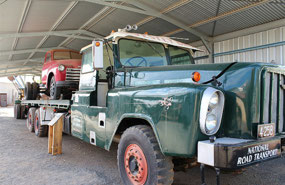
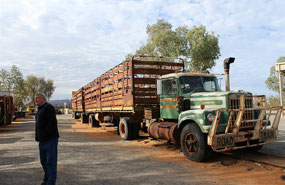
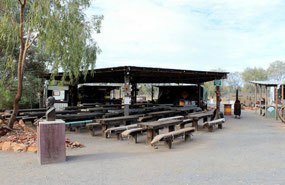
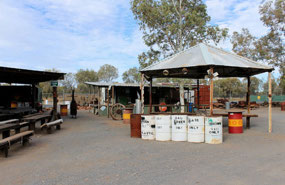
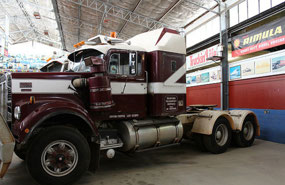
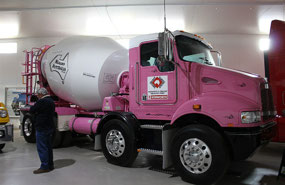

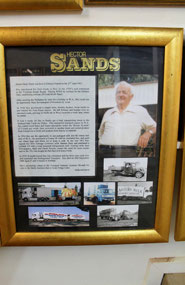
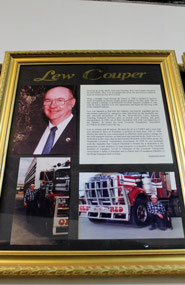
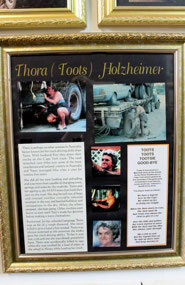
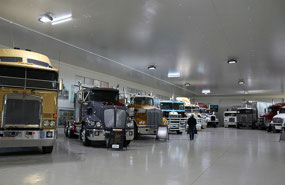

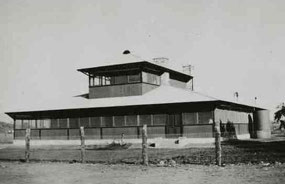
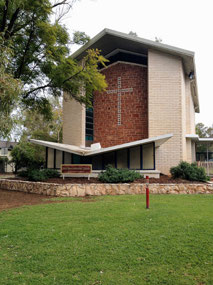

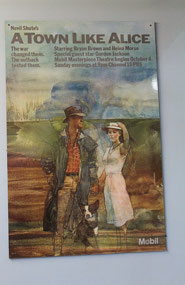
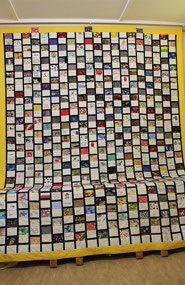
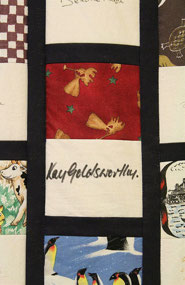
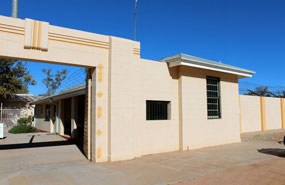
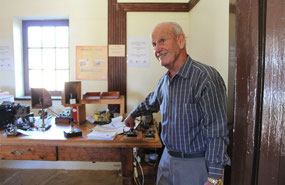
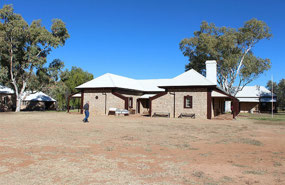
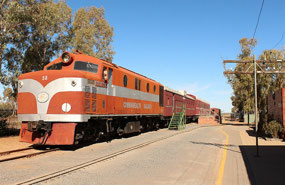
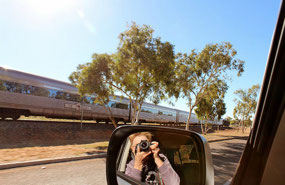
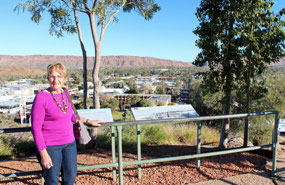
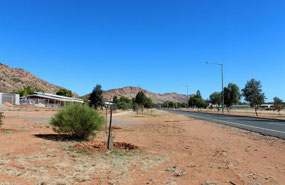
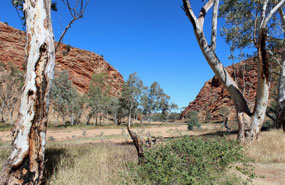
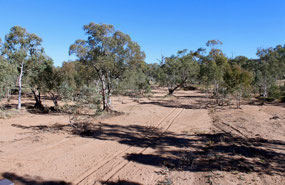
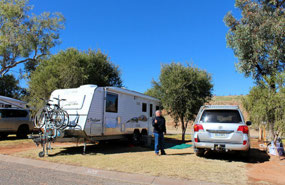
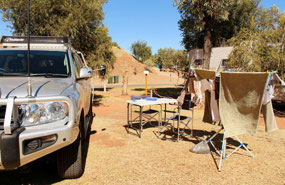
2025-05-22